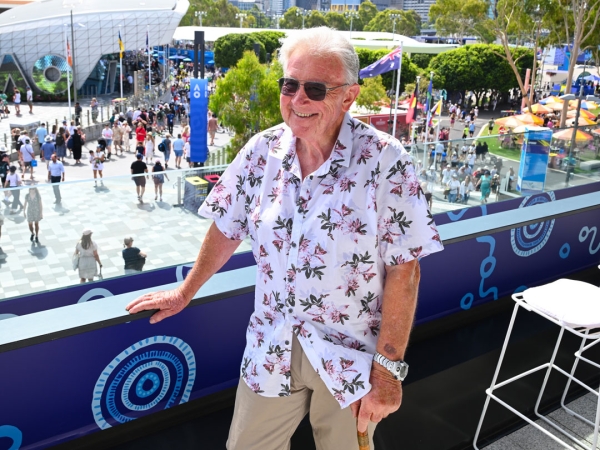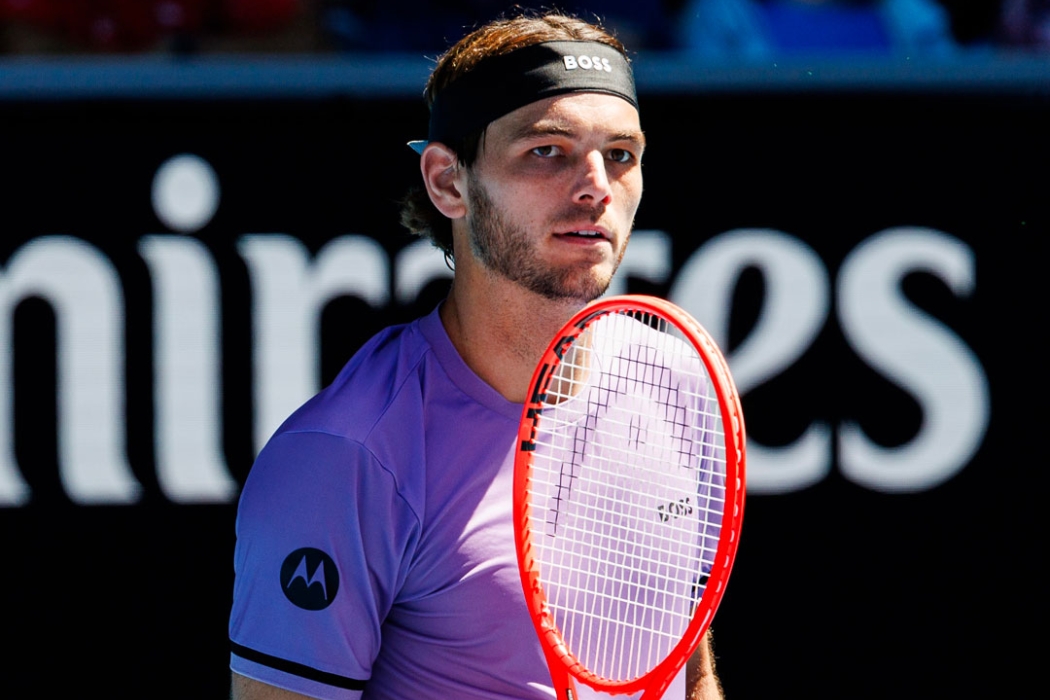Garry Wilkinson’s dulcet tones have been synonymous with tennis for longer than the players competing at this year’s Australian Open have been alive.
The 83-year-old commentator and journalist is covering his 48th AO and admits he’s not sure what to do with the prospect of impending retirement.
Since putting his hand up to commentate on tennis, filling a vacancy left by a disgruntled colleague, Wilkinson has missed only two Opens – in 1977 and in 1986.
“This year is my last hurrah, and my farewell year,” he says.
MORE: All the results from AO 2025
“I’m going to be recording some voiceovers and promos for the world feed that goes to 168 other countries or something, and then that’s it, I’m done, I’m finished, I’m out of here.
“That’s the end of 65 years in radio and television. Retired.”

Wilkinson estimates that in that time he has covered six-and-a-half-thousand matches, and he’s kept his media accreditation from each tournament in a box.
“It’s been a part of my life for a kilometre, which doesn’t mean a lot to a lot of people, but a kilometre is five eighths of a mile and tennis has occupied five eighths of my life,” he says.
“And the people, that’s the thing I’m going to miss most.”
Wilkinson, who is now based in Potsville, New South Wales, with his wife, Kerrie - the pair celebrate their 35th wedding anniversary this year - never anticipated what direction tennis would take him when he put up his hand that day. By his own admission, he didn’t have a deep interest in the sport at the time.
“Tennis I got into by accident,” he says.
“At that point in my life I had never played a tennis match. And I was a dreadful person when I was younger. I was expelled from five or six schools, and my mother was in despair, but my father always told me, ‘If you want to get ahead in life son, don’t be afraid to put your hand up, and don’t ever refuse a combat assignment.’
"So, when I heard that the gig was available as a tennis commentator, I put my hand up.
“I’ve subsequently I think played three pro-am tennis matches,” Wilkinson continues. “They once paired me with Mr Toyota himself. The big chief of Toyota, who didn’t like losing. We played a match at Kooyong many years ago and we lost and if he’d had a samurai sword, I think he would have taken my head off!
From serendipitous beginnings, Wilkinson has developed a deep affinity with tennis and the Australian Open.
“I had no connection, no real affection, no particular interest in tennis. But I soon discovered that I loved the game, or I loved the people playing the game. I’ve made so many friends, players and now players turned commentators, and it’s just become part of my life,” he says.
The event, he observes, has constantly evolved and is unrecognisable from when he first started.
“The difference, it’s just light years. Galaxies apart. It’s unimaginable,” he says.
“When I first started, we only televised centre court. There were no peripheral courts. They just played and then if they won matches, they ended up getting to play on the centre court, they got on television.
“The good thing about that was you could get off air at one minute to six and go out for dinner,” Wilkinson continues. “And in those days, you could walk out of the commentary box and just knock on the locker room door and say, ‘Anybody coming?’ And out you’d go with a bunch of players.
“You want to talk to a player today, you’ve got to go through about eight people.”
Wilkinson didn’t finish high school, or go to university, but he could always talk. Being paid for it was a dream, but more than that it allowed him to make genuine connections.
“I’ll confess to you, the last 10 years here, every day, I purposely walk down the corridor past the locker rooms, just on the off-chance I'll bump into somebody and say, ‘G’day, how are you?’” he says.
It’s fair to say Wilkinson would have a lot of dirt on a lot of people, but we can’t talk about that here. “John Fitzgerald asked me today, he said, ‘Wilco, when you going to write a book?’ I said, ‘I have to wait for a lot of people to die before I could do that,’” he quips.
Wilkinson’s memory is sharp. Give him a match from any of the many decades he’s covered the Australian Open and tennis, and he’ll tell you the score and what happened.
The 1978 men’s Australian Open semi-final between American Arthur Ashe and “Australian knockabout” John Marks lives rent free in his head, so too does the 1993 women’s final between Steffi Graf and Monica Seles.
“Seles won it 4-6 6-3 6-2. That’s a pretty ordinary looking scoreline, but the drama and the intensity the match was played was riveting,” he says.
And there’s the time a spectator in the stands lifted Pete Sampras, devastated by news his coach was ill, from two sets down to victory over Jim Courier, shouting “do it for your coach”.
“The best matches I’ve ever seen here … Rafael Nadal beat Roger Federer in five sets in 2009. Novak Djokovic beat Rafael Nadal in five sets in 2012. Roger Federer beat Rafael Nadal in five sets in 2017. Those three matches standout,” he says.
Wilkinson may not have said G’day to any of the fancies for AO 2025 outside of the locker room just yet, but he’s as well-researched as ever and doesn’t hesitate to offer up who he thinks may take the silverware next weekend.
“You’ve got to include [Novak] Djokovic in the equation. You’d like to think [Alex] de Minaur is in the equation, [Jannik] Sinner obviously is,” he says.
“In the women’s draw if somebody beats [Aryna] Sabalenka I’ll be very surprised.
“I mean, there are blokes out who don’t hit the ball half as hard as she does. She’s not in the race on her own, but she’s got a long head-start.”
Whoever it is, Wilkinson’s voice, somewhere, will capture it, and the summer, one last time.



